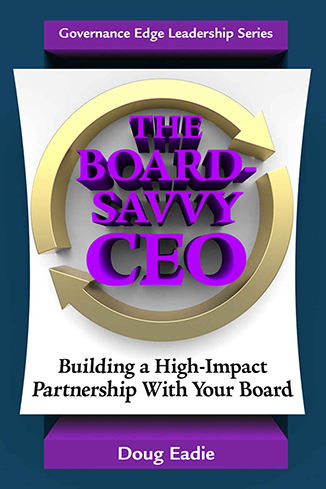Updating nonprofit business models has been a major theme of this blog, with posts featuring podcasts by Richard Browdie, CEO of the Benjamin Rose Institute on Aging (November 13, 2017: https://www.dougeadie.com/involving-board-strategic-organizational-development/); Rick Homans, CEO of the Tampa Bay Partnership, and Jeffrey Thomson, CEO of the Institute of Management Accountants (May 24, 2016: https://www.dougeadie.com/two-extraordinary-ceos-spearhead-business-model-updates/; and Guy Legault, Board Chair, and Michael Anderson, CEO, of the Canadian Society of Association Executives (Part 1 March 10, 2016: https://www.dougeadie.com/canadian-society-association-executives-updates-business-model-part-one/; and Part 2 March 22, 2016: https://www.dougeadie.com/planning-box-updating-csaes-business-model-part-two/).
Next week’s post at this blog will feature the fourth podcast in this business model series – by Rob Paterkiewicz, Executive Director/CEO of Selected Independent Funeral Homes, a national trade association. Although the term “business model” is widely used these days, it has been defined in various ways over the years, and there certainly isn’t universal agreement on what it means. Therefore, I think our readers might be interested in refreshing their understanding of the term by taking another look at the following article, which kicked off the business model series on February 27, 2016:
About Business Models
A local nonprofit serving adults and children with learning disabilities launches a number of business ventures (known as “social enterprises”) to generate earned income – in response to cutbacks in government funding. A national association re-structures an elaborate system of time-intensive local chapters in order to channel resources to more powerful and “profitable” educational programming. An aging services nonprofit successfully acquires (publicly described as “merging with”) a sister organization in order to realize economies of scale and attract new customers. What do these nonprofits have in common? They are updating what, these days, is known as their “business model.” In a nutshell, a nonprofit enterprise’s “business model” describes the fundamental nature of the enterprise, is aimed at growing the enterprise (with special attention to profitability), and must be periodically updated to respond to environmental growth opportunities and challenges (such as emerging new needs and changes in funding patterns) if the enterprise is to continue to grow.
Next week we’ll be posting a podcast featuring the Board Chair, Guy Legault, and President & CEO, Michael Anderson, of the Canadian Society of Association Executives, talking about the development and implementation of CSAE’s updated business model. Although you hear the term “business model” a lot these days, it’s actually a relative newcomer to the for-profit and nonprofit management lexicon, and a quick look at the literature will tell you that there’s no precise, universally accepted definition of what “business model” means. As Andrea Ovans observes in her January 23, 2015 Harvard Business Review article, “What Is a Business Model?”, “it’s one of those things many people feel they can recognize when they see it (especially a particularly clever or terrible one) but can’t quite define.” Since Guy and Michael’s podcast will be the first of a series dealing with nonprofit business models, I thought our readers might appreciate these reflections on the evolution of this increasingly common term.
If the term “business model” is pretty recent, the concept has been around since at least the mid-1900s. That’s what the late MIT professor Alfred Chandler was talking about in his classic 1961 work, Strategy and Structure: Chapters in the History of the Industrial Enterprise. In this brilliant study of the growth of some of America’s greatest industrial enterprises in the first half of the Twentieth Century – the likes of Du Pont, GM, Standard Oil, and Sears, Roebuck – Chandler’s concept of “business model” (a term that never appears in the book) links an organization’s growth strategy to its organizational structure. In Chandler’s words, strategy is “the determination of the basic long-term goals and objectives of an enterprise, and the adoption of courses of action and the allocation of resources necessary for carrying out these goals.” And structure is “the design of organization through which the enterprise is administered.”
Chandler’s research indicated that these two key elements of the business model must be synchronized if successful growth is to occur. In a nutshell, successful organizations must adopt new strategies to capitalize on opportunities to grow, and in order to successfully implement those growth strategies must put new (or tweaked) structure in place. Put these two elements together and what have you got? A business model. Sad to say, of course, in the case of Sears and GM, the failure to update their business models in the latter half of the Twentieth Century has led to the dramatic decline of these former industrial icons.
Since Chandler’s seminal mid-century study, variations on his fundamental theme have appeared. For example, I really like Joan Magretta’s contemporary take on business models, in “Why Business Models Matter.” They are, she writes in 2002, “at heart, stories – stories that explain how enterprises work. A good business model answers Peter Drucker’s age-old questions, ‘Who is the customer? And what does the customer value?’ It also answers the fundamental questions every manager must ask: How do we make money in the business? What is the underlying economic logic that explains how we can deliver value to customers at an appropriate cost?”
Enough history! I’d like to close with the observation that one of the preeminent jobs of the nonprofit CEO in today’s world is to recognize the need to update her nonprofit’s business model, and to work closely with her board in accomplishing the update – whether it pertains to new products and services, new customers, clients, or members, or new management structure and process – or all three.






